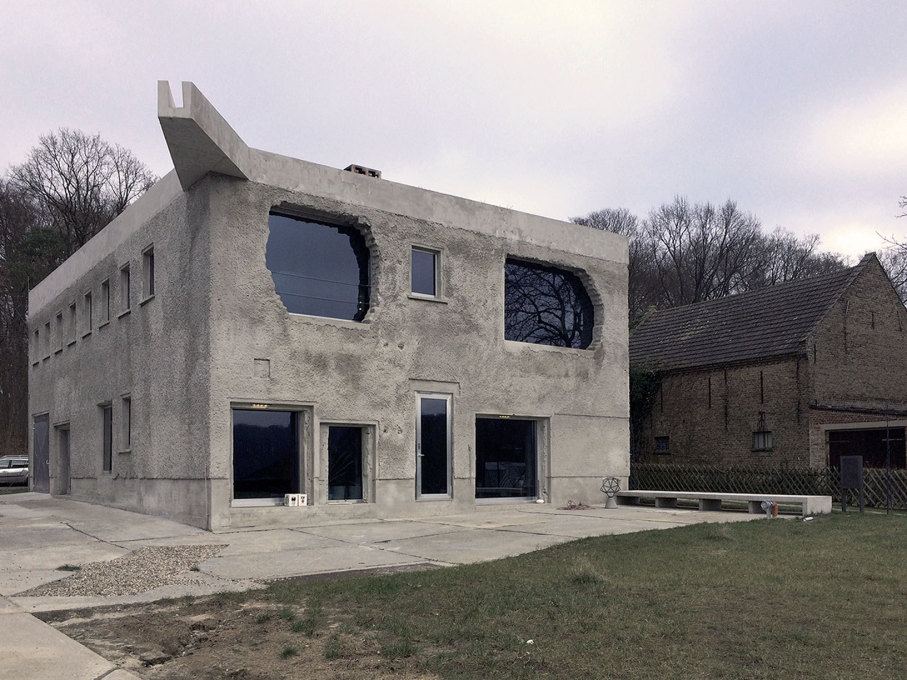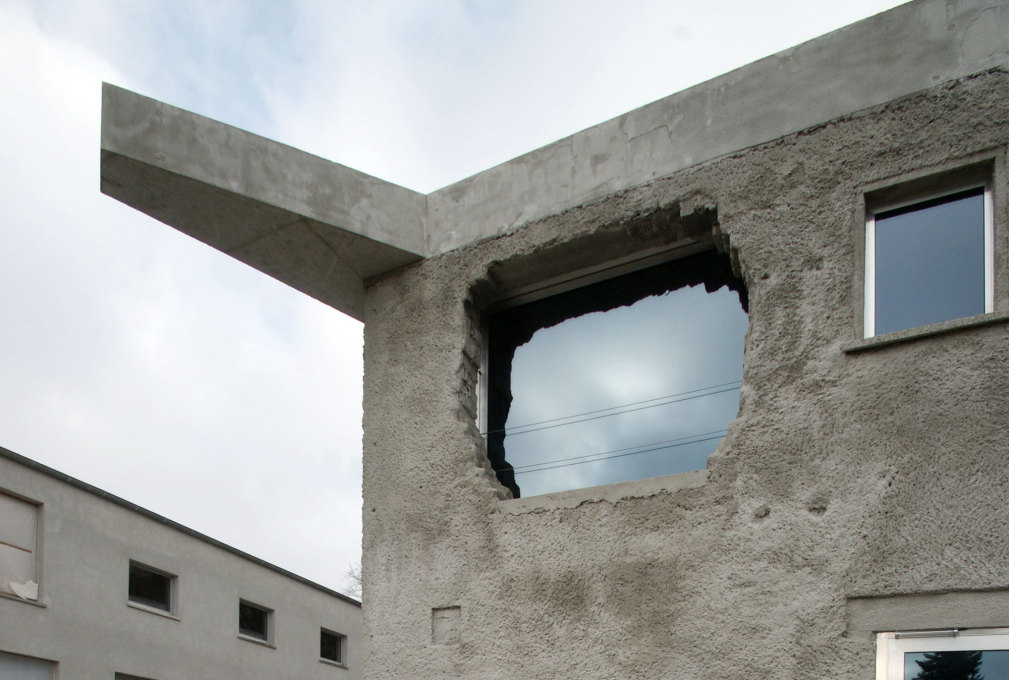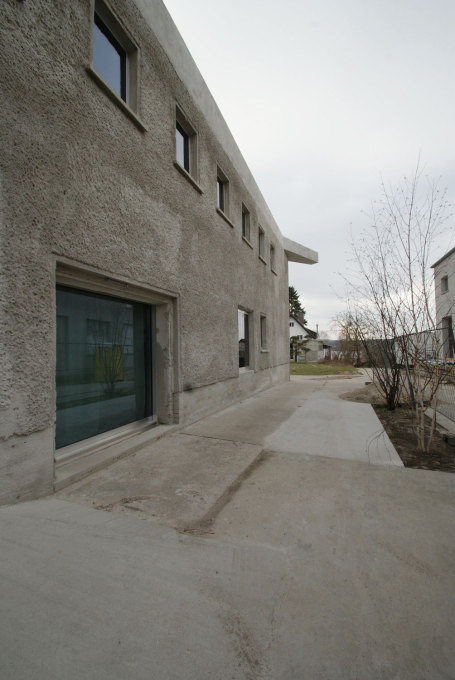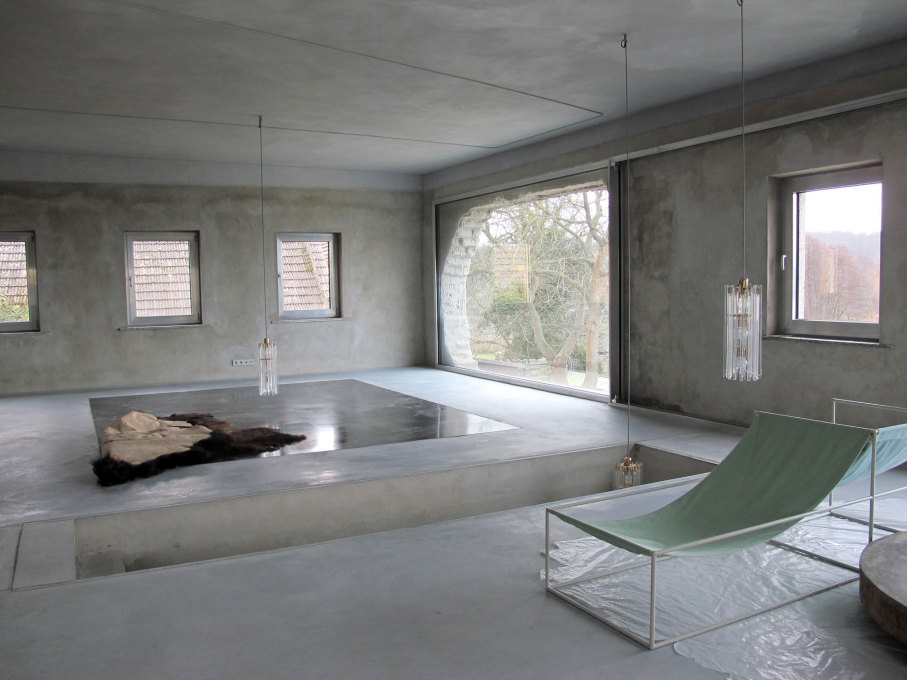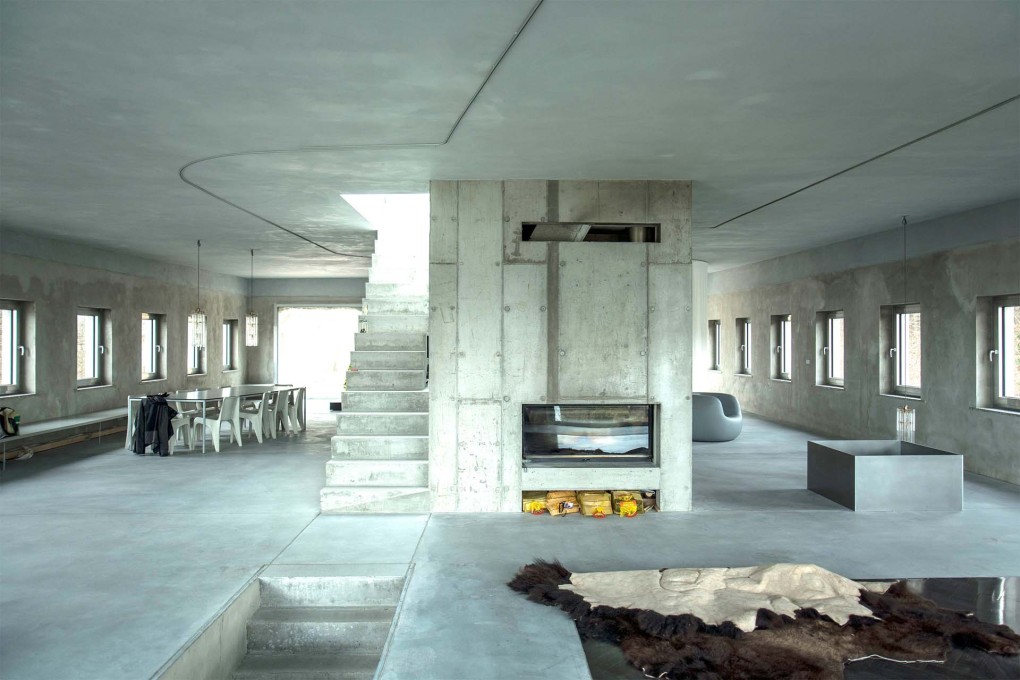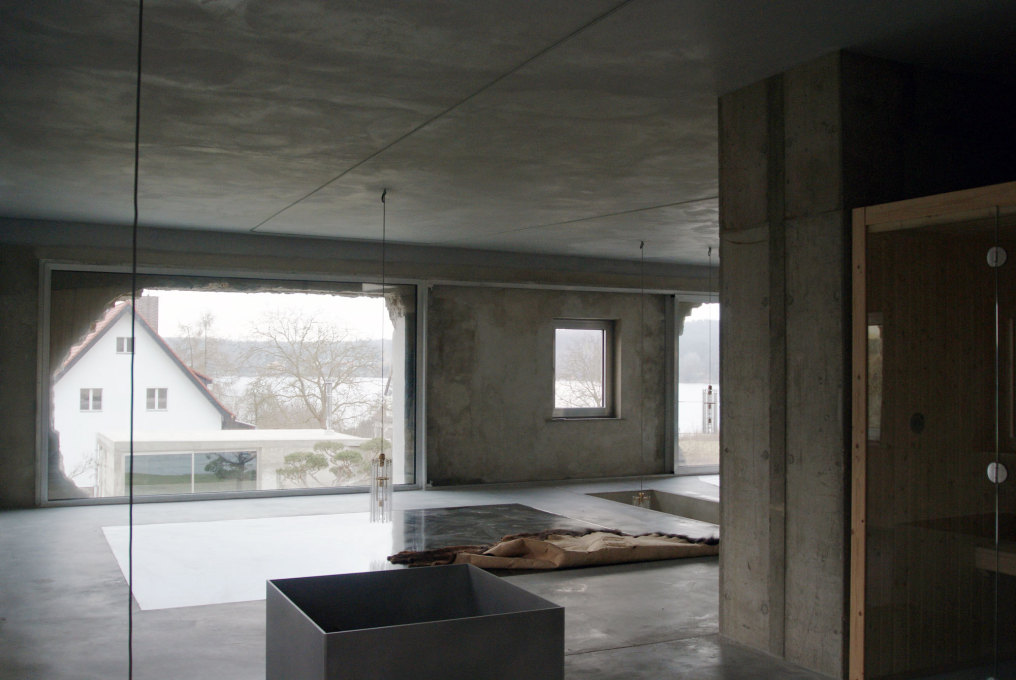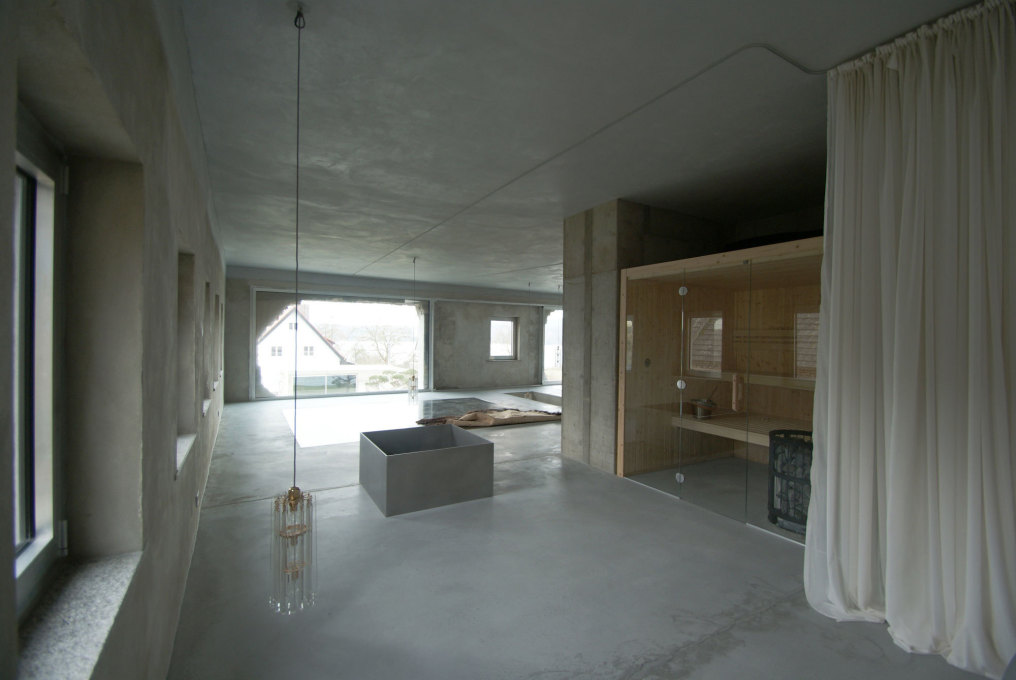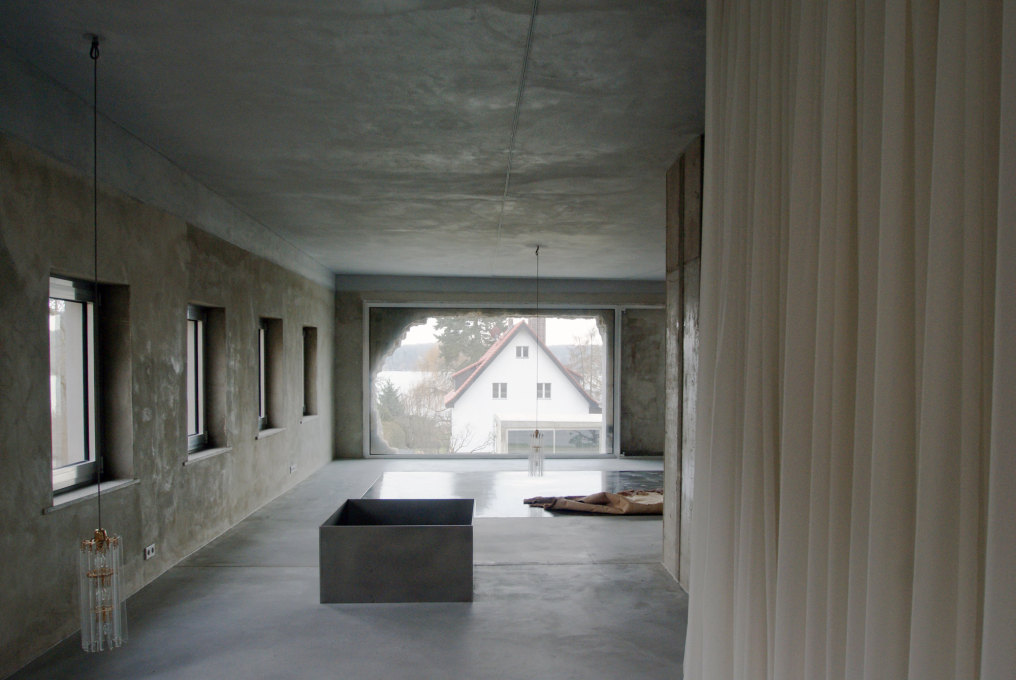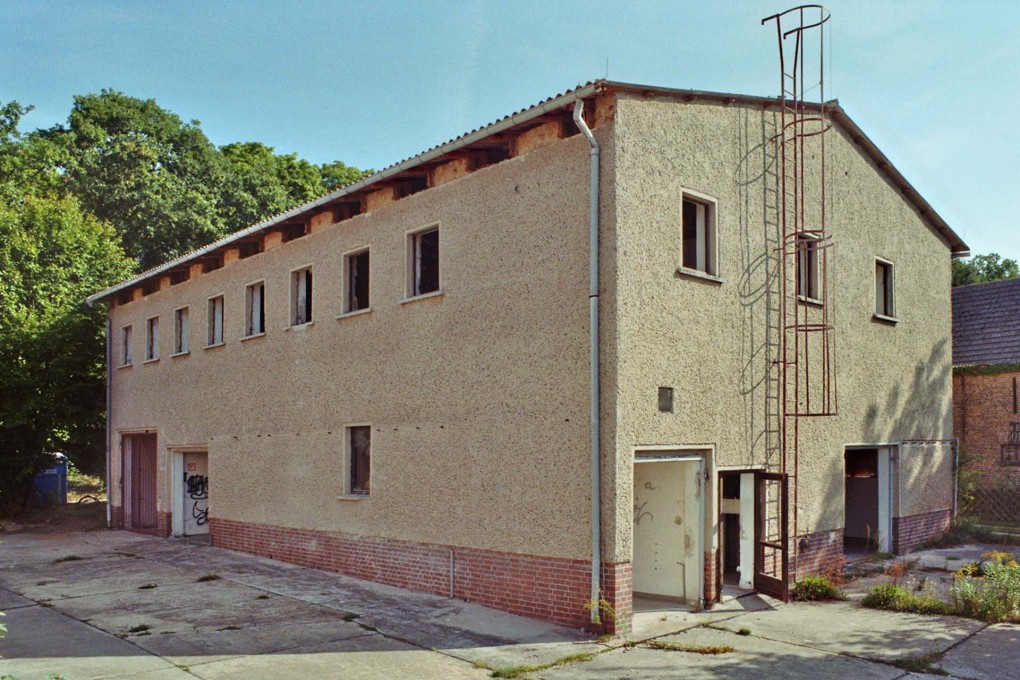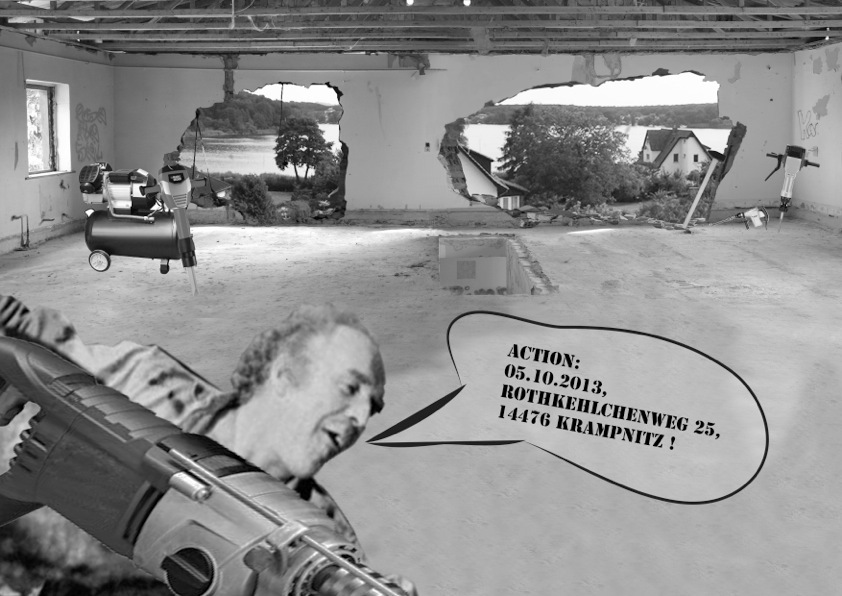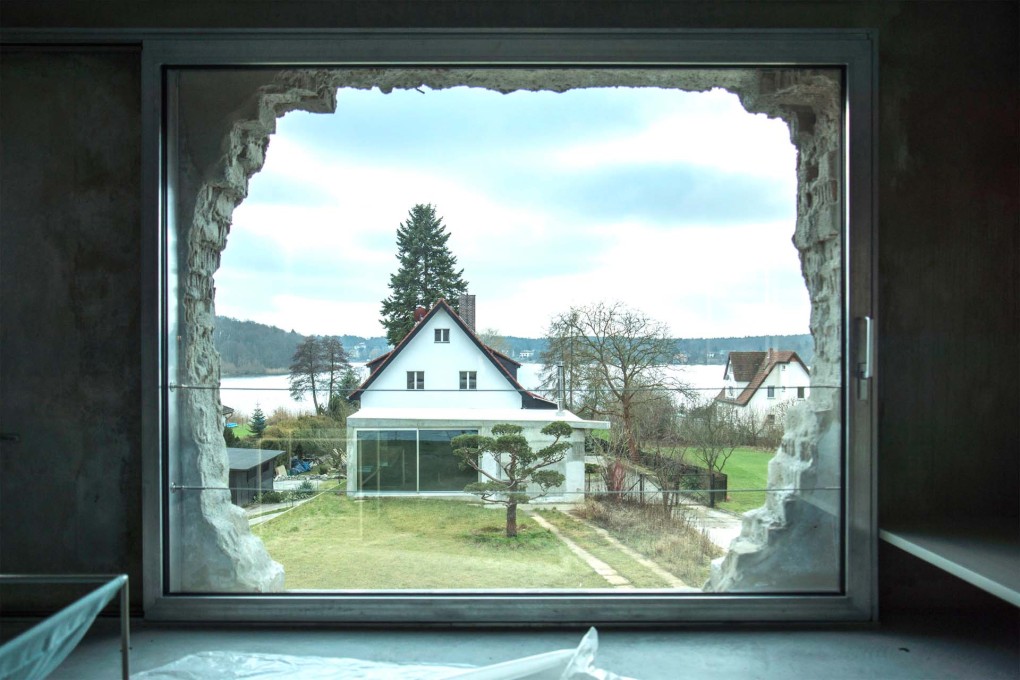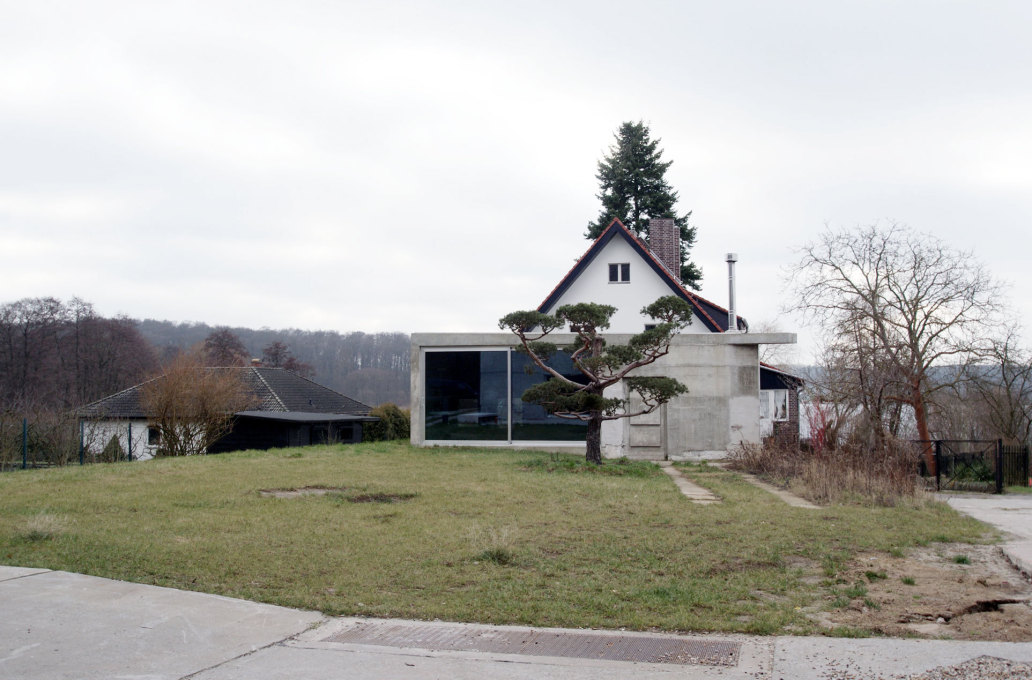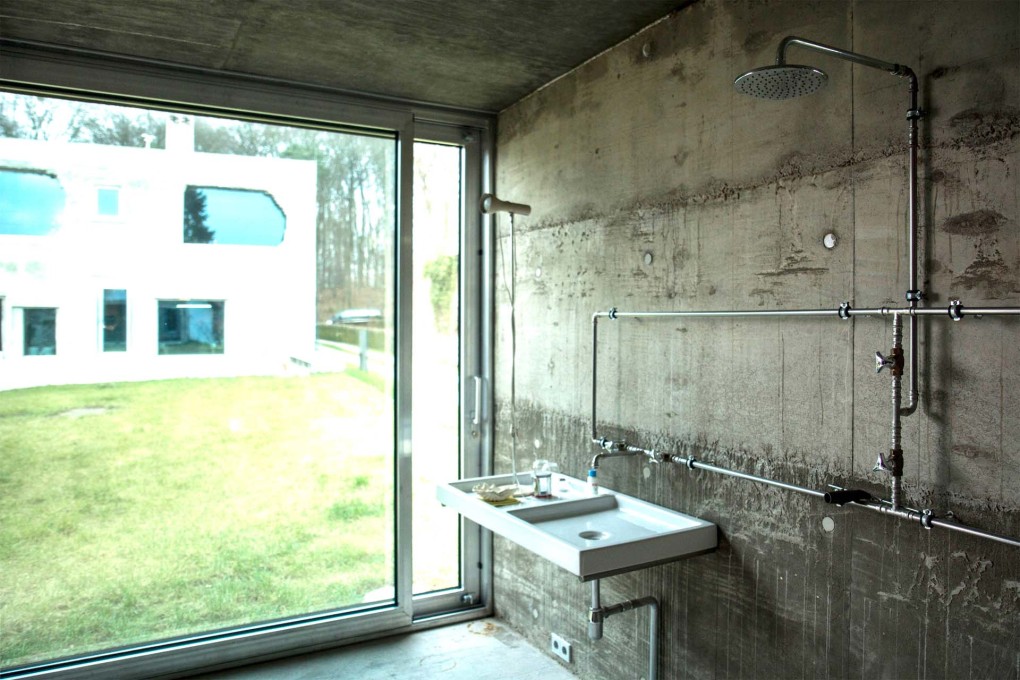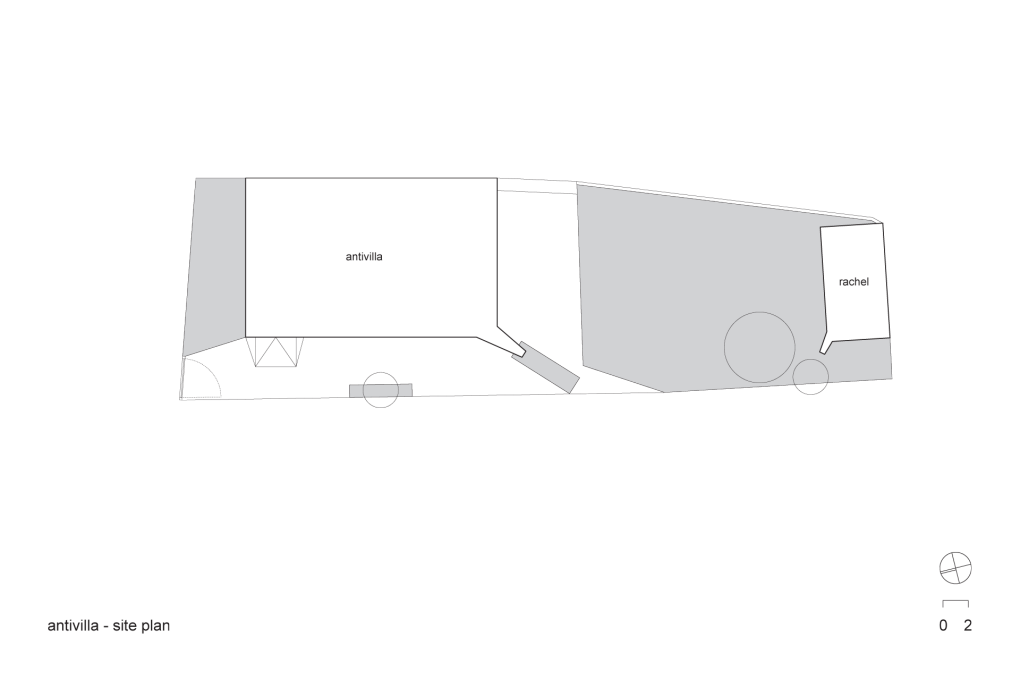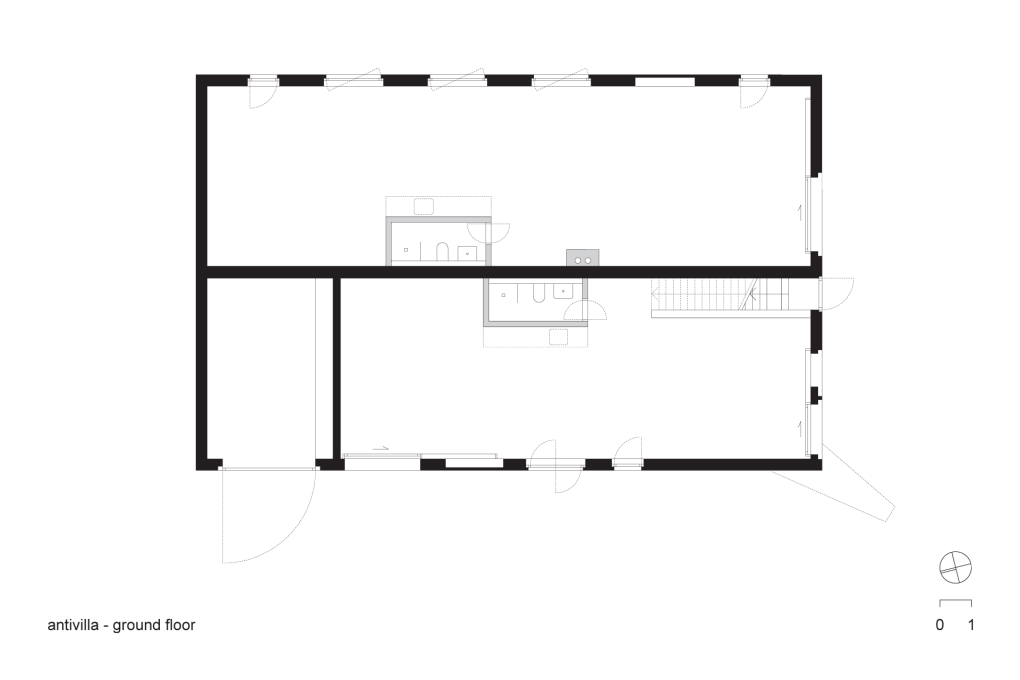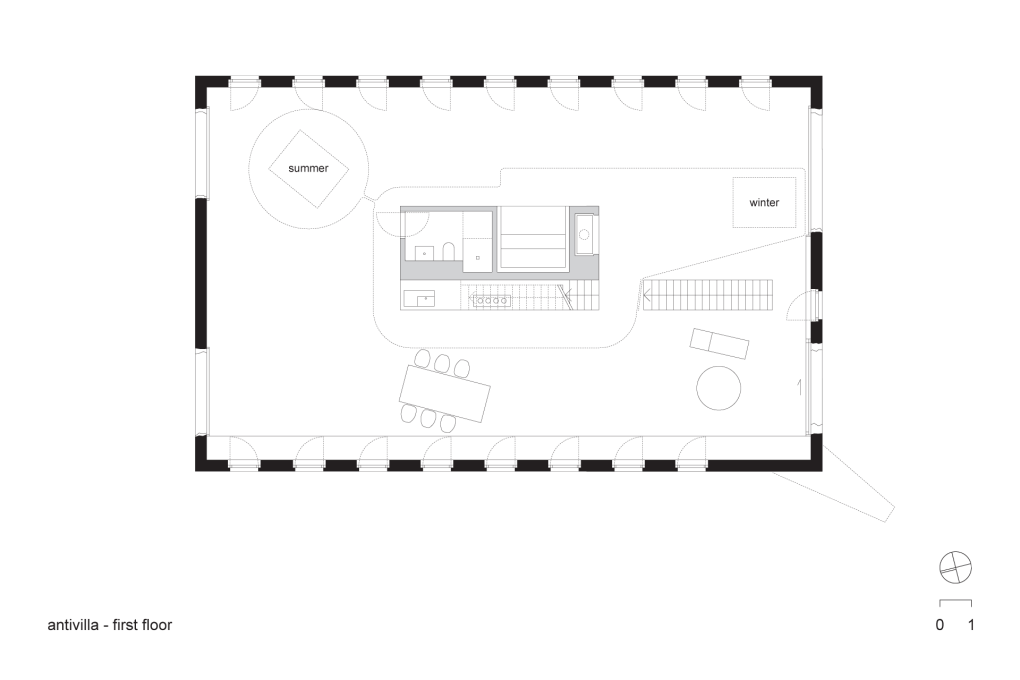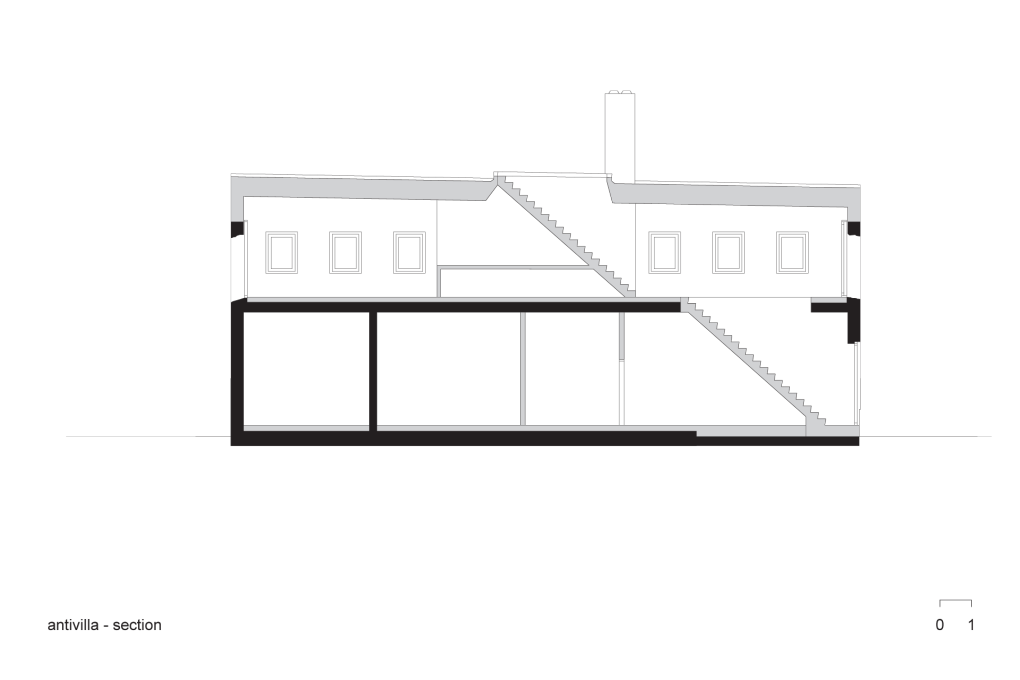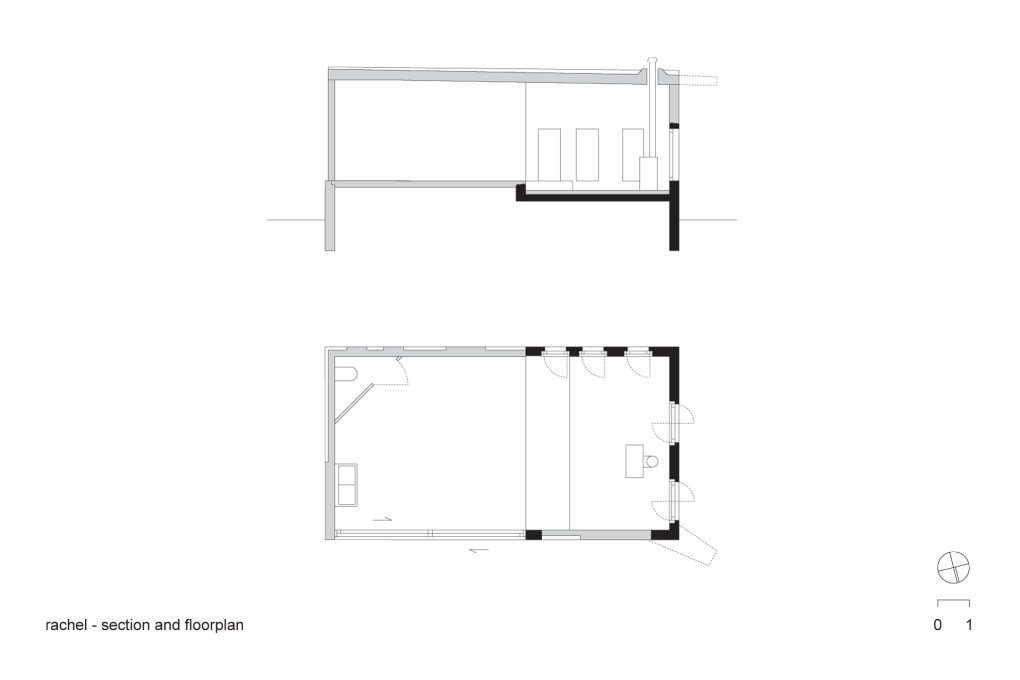The work of Arno Brandlhuber is one of Germany’s best-kept architecture secrets. A thinker, a provocative innovator, a rule-breaker and a builder who is very much setting his own agenda. uncube have been fans for some time but, with the completion of his new “Antivilla” near Berlin, we suspect his light won’t remain hidden under a bushel for very much longer.
For Berlin-based Arno Brandlhuber no gap between buildings is too tight, no ruin re-use too absurd. He juggles building regulations and restrictions that most other architects would find too inhibiting. His latest project, realised together with his partners Markus Emde and Thomas Schnieder, is the “Antivilla” on the shores of the Krampnitz lake near Potsdam. This is Brandlhuber’s weekend home and place of exile for Berlin artists. It is an extreme case study for sustainable building, which challenges, in particular, Germany’s rampant insulation obsession.
Locally, the words “villa” and “Potsdam” conjure immediate associations with multi-million euro residences with lake views, but Brandlhuber’s project is anything but one of these. Instead of nestling between neoclassical city villas, his Antivilla is situated between modest little houses with pitched roofs and picket fences – right in the middle of the former border zone. The building is the repurposed ruin of a former knitting factory – VEB Ernst Lück – more municipal grey GDR render than eggshell-coloured, pillared pomp. It is the exact antithesis of the noble estates found in Babelsberg and the Berlin suburbs – its anti-location included.
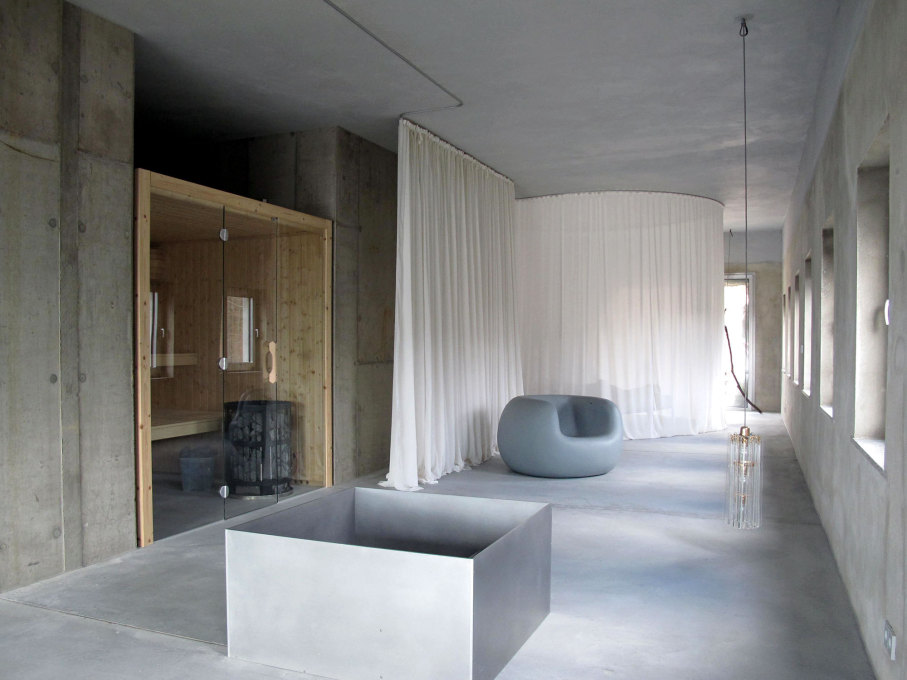
The only real villa-like aspects are the proximity to the lake and the sheer size of the living area – a quality, according to Thomas Schnieder, that ensured the survival of its original “typical GDR 1980s budget construction”. If it had been demolished, he adds, “we could have built perhaps three detached family homes with 150 square metres apiece”. The conversion has given Brandlhuber some 500 square metres of living space, which he shares with artists and artworks. The ground floor is given over to ateliers and owner Brandlhuber uses the upstairs for himself. The clear span of the column-free space is dominated by artworks by Anselm Reyle, Alicja Kwade and Gregor Hildebrandt. Bronze and acrylic lamps designed by Rudolf Schwarz, salvaged from an old post-war church in Cologne, are reflected in the “water glass” silicon-sealed screed floor.
The main task of the conversion was the renewal of the roof. The former triangular truss construction with its corrugated asbestos cover was replace with a flat roof featuring a dramatically cantilevered rain-spout. The most prominent feature of the redesign is the openings in the gable ends of the building. A villa needs not only plenty of room, but also generous views onto the landscape. These coarse openings were broken through the exterior walls with sledgehammers as an “artistic act” by friends, family and artists. They reveal views not just to the lake on one side and an oak wood on the other, but also to its own brickwork which was built by “bricklayer apprentices from Mozambique or Vitenam who came to the GDR back then”, says Schneider, who is pleased that both the face and the history of the original building could be kept.
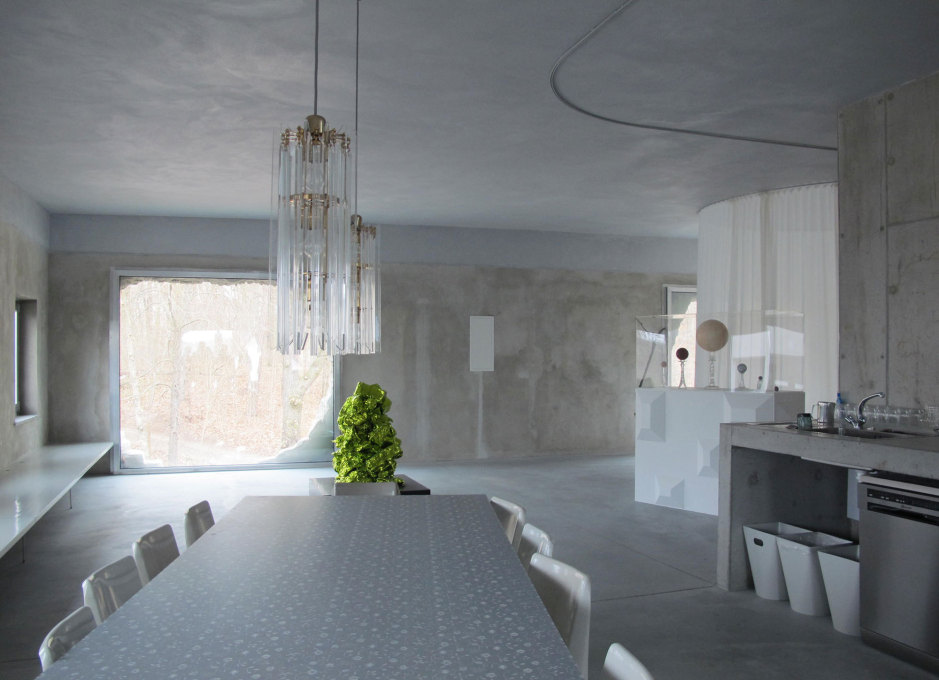
The concrete structure, cast on site, in the middle of the main multifunctional room, which can be used as a living, sleeping or atelier space, is the only permanently divided interior element. From here there is also a staircase that leads up to the roof. The Antivilla was originally planned to contain no central heating whatsoever, a sauna and a fireplace in the core providing the only source of heat for the entire upper floor. A curtain divides the open-plan space like an onion around the core into various areas of warmth. The cooler zones lying outside the thin, but dense, fabric of the curtain taken together with the exterior walls, serve as insulation against the cold air outside. It’s actually quite an ancient concept – think of old farmhouses, or grandma’s feather bed – yet this wonderful idea fell foul of current energy-saving building regulations. These failed to accept that a curtain, cushion of cool interior air and the exterior wall could be counted as one single building element, just as much as they failed to recognise dynamic spatial boundaries. As a result, an additional under-floor heating system had to be installed as back-up if necessary.
Did Brandlhuber lose his gamble with the regulations this time around? Not at all, for this is still an exceptional building: The curtain as a flexible room divider is very much in use in the large upper floor space – and it really does achieve the expected thermal effect. In fact with it the Antivilla really laughs in the face of the German Energy Saving Ordnance, which managed to block a genuinely energy saving concept with its rules.
The Antivilla is not alone by the way; it was predated by a little sister in the garden, called “Rachel” – named after the artist Rachel Whiteread. Here, architecture students poured an extraordinary concrete summer refuge using a ruined shed in the garden as formwork, before removing the original structure. This building gets away without the under-floor heating, but contains a cast iron stove as well as a diagonally mirrored corner concealing the toilet and a storage closet. It is a single raw concrete room with just as broad an outlook as its big brother.
– Luise Rellensman is an editor at Baunetz and assistant professor/research assistant at the department for architectural conservation at BTU Cottbus.
(Translation by Sophie Lovell)




